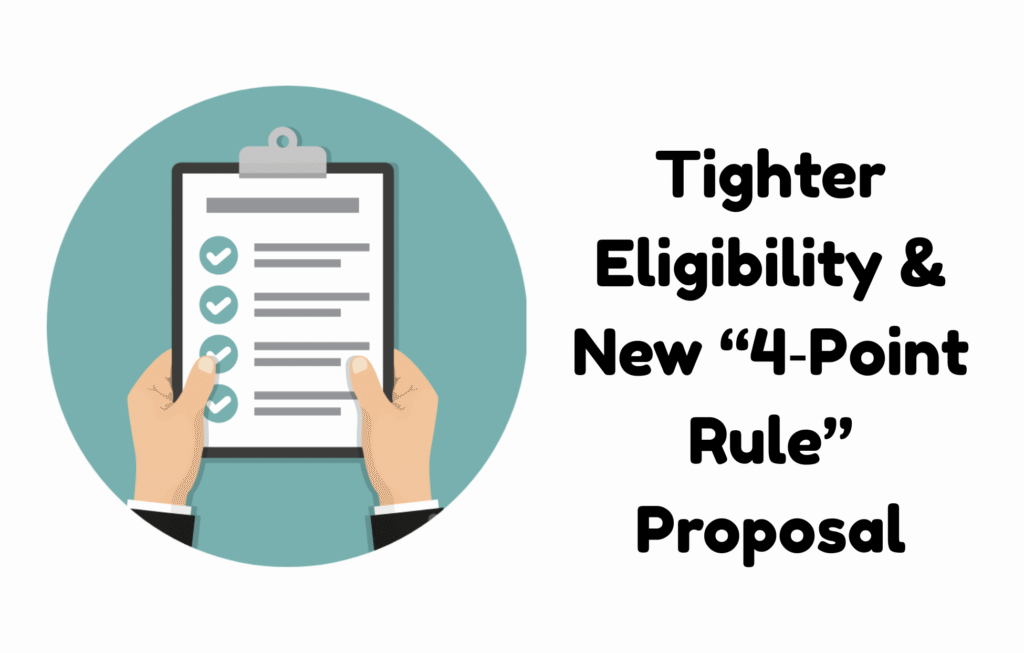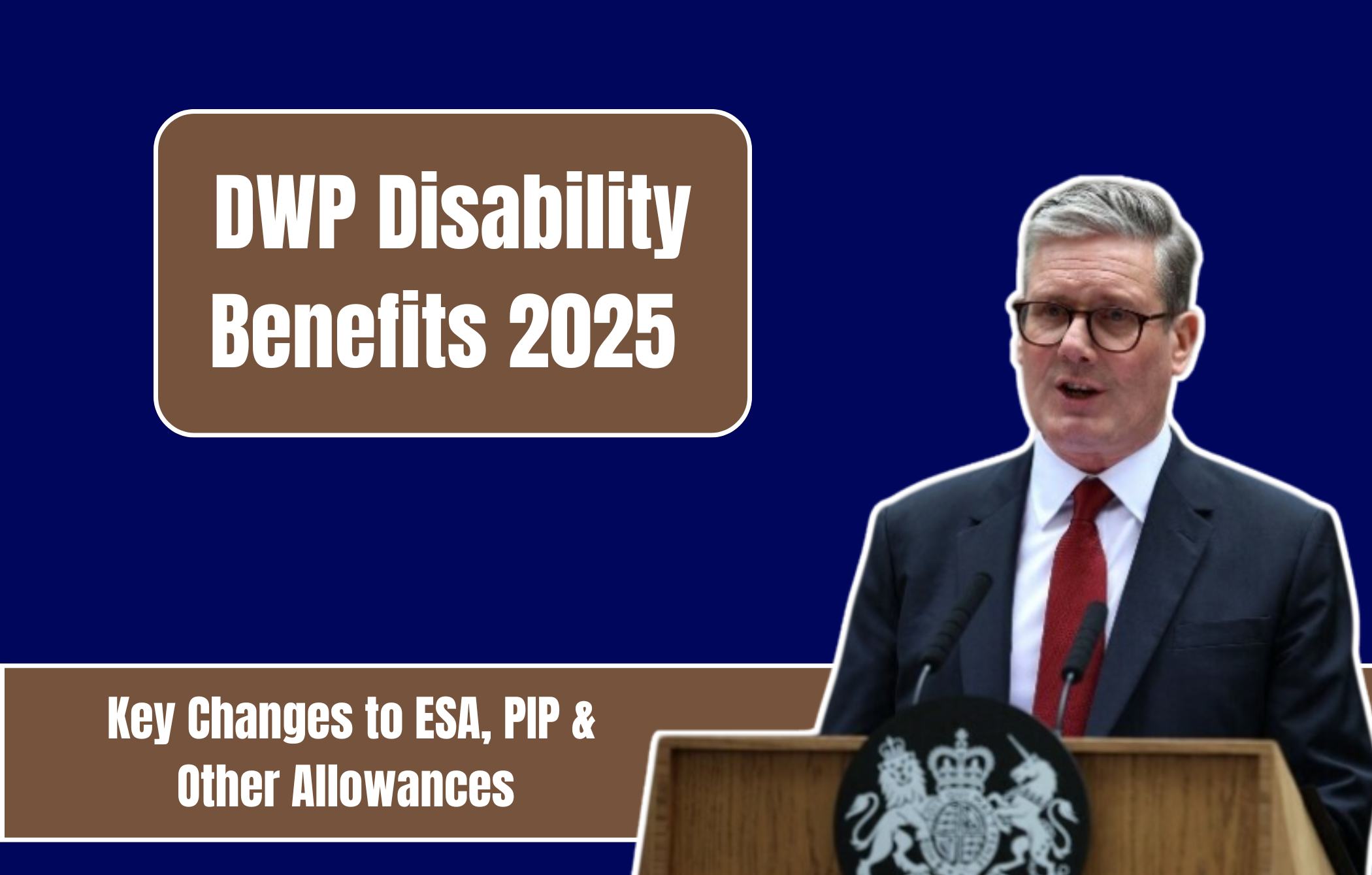Introduction & Context
In 2025, the UK government is pushing through a suite of benefit reforms under its “Pathways to Work / Welfare Reform” agenda, targeting disability and health‑related benefits. Many changes are intended to reduce expenditure, tighten eligibility, and refocus support toward those with more severe needs. But critics warn that many vulnerable people could lose support.
In this article, we’ll look at:
- What’s happening with PIP (Personal Independence Payment)
- What’s changing (or proposed) for ESA (Employment and Support Allowance)
- Adjustments to related benefits and allowances
- Timelines, transitional protections & risks
- What claimants should do
1. Personal Independence Payment (PIP): Key Changes & Proposals
PIP is designed to help people with long-term health conditions or disabilities with the extra daily living and mobility costs they face. It is independent of whether someone works.
Increase in Rates (April 2025)
To partially keep pace with inflation, DWP has confirmed a 1.7% uplift to PIP rates from April 2025.
Under the new rates:
- Daily Living component:
• Standard rate: ~ £73.90 per week (up from £72.65)
• Enhanced rate: ~ £110.40 per week (up from £108.55) - Mobility component:
• Standard: £29.20 per week (up from £28.70)
• Enhanced: £77.05 per week (up from £75.75)
If someone receives both enhanced Daily Living and enhanced Mobility, their four‑week payment under the new rate could reach ~ £749.80.
While this is helpful, many contend that small increases don’t keep pace with the actual extra costs of disability.
Tighter Eligibility & New “4‑Point Rule” Proposal

One of the most controversial changes is a proposed new qualifying condition for the Daily Living component of PIP:
- From November 2026, claimants would need not only to score 8 points total under the existing descriptors, but also to get at least 4 points in a single daily living activity to qualify for that component.
- Under current rules, a person could score smaller points across several descriptors to meet 8 points in total; under the new rule, if none of those descriptors gives 4 points individually, they may lose eligibility even if total = 8.
- The government’s rationale is that PIP growth in recent years has outpaced disability prevalence and is stressing the welfare budget.
There was significant pushback. In mid‑2025, the government announced that the 4-point rule would not apply to existing claimants (i.e. their awards would be “grandfathered”) — only to new applicants.
Additionally, later in July 2025, the government removed the 4‑point rule from the current bill entirely and said that changes to PIP descriptors would be based on the ongoing Timms Review (a review of PIP assessments).
So, currently:
- New claimants after policy change might face more stringent requirements
- Existing claimants should not lose their current PIP awards simply because of these rules
- The government seems to be scaling back some of its more aggressive proposals under pressure
Motability & Equipment Payment Cuts
As of 3 January 2025, the government ended two key payments linked to mobility:
- The £750 “New Vehicle Payment” under the Motability scheme is discontinued for new orders after January 3, 2025
- A £100 payment for new powered wheelchairs / scooters (New Product Payment) is also ended for new orders after that date
Those who already placed orders before that point may still receive those payments, but new claimants or new mobility equipment orders will not benefit.
2. Employment and Support Allowance (ESA) & Related Benefit Reforms
ESA is a benefit for people who have a disability or health condition that prevents or limits work. It has two parts: contributory ESA (based on National Insurance contributions) and income-related ESA (means-tested). Many ESA awards were paused in recent years, but it remains a key benefit for those out of work due to health.
Move Toward “Unemployment Insurance” & Benefit Merger

One significant proposal is to merge “New Style ESA” and “New Style JSA” into a new benefit called “Unemployment Insurance”:
- This new benefit would be non-means-tested, but only available for people who have made sufficient National Insurance contributions.
- The payment is proposed to be set at ~ £138 per week (effectively the same as current ESA rate)
- Claimants would be expected to actively seek work, though allowances would be made for those with serious health limitations.
This shift is intended to simplify benefit systems and push more claimants toward work (or at least into job search), but it raises concerns about fairness for those whose health severely restricts work capacity.
Reintroduction of Assessments & WCA Changes
- The Work Capability Assessment (WCA)—which determines who is “fit for work,” who qualifies for ESA, or what level of support they should receive—has been suspended or limited in recent years for many claimants. Under reform proposals, reassessments will resume for many claimants (except those with “never work” status or end-of-life exceptions) under the new unified assessment framework.
- By 2028, the WCA is slated to be scrapped entirely and replaced by a new single assessment tied more closely to PIP health assessments rather than separate work capability measures.
- The new assessment would emphasize how a person’s health affects daily living more than strictly work capacity.
So in effect, by 2028, ESA claims and PIP claims may be more tightly integrated in assessment criteria.
3. Related Benefits & Allowances: What Else Is Changing
Beyond PIP and ESA, several other related allowances and benefit rates are being adjusted or proposed in 2025:
Attendance Allowance & Disability Living Allowance (DLA) Rates
- Attendance Allowance (for people aged over state pension age who need help with personal care) will also see a rate increase aligning with the 1.7% uplift.
- Disability Living Allowance (DLA), mostly for children (since working-age adults are migrated to PIP), will see its care components raised to match (e.g. highest rate to ~ £110.40, middle ~ £73.90).
Those DLA claimants will still get increased payments, though new adult DLA claims are limited (replaced by PIP).
Carer’s Allowance, Carer Interactions
- The Carer’s Allowance weekly rate is increasing to ~ £83.30 (from ~ £81.90) as part of general uprating of benefits.
- The earnings threshold for carers (how much you can earn while still receiving the allowance) is also rising—to approximately £196 per week.
Many carers also rely on PIP entitlements of the person cared for, so PIP changes indirectly affect carers too.
Universal Credit Health / Disability Elements

- The “Health Element” of Universal Credit (UC) (i.e., extra payments for health/disability) is under threat. Under new proposals, the rate for new claimants (after April 2026) would be cut by nearly 50% (from ~ £97/week down to ~ £50/week).
- For existing claimants, that rate is proposed to be frozen (i.e. no further real increase) over 4 years at the 2025/26 level.
- To balance this cut, the standard allowance in UC will increase gradually: for single claimants over 25, from £91/week to £92 in 2025/26, then to £98 in 2026/27, etc.
These adjustments mean that claimants relying heavily on UC disability top-ups could see a net loss even as standard rates rise.
Expenses, Assessments & Safeguards
- The Pathways to Work Green Paper proposes changes to how health assessments are carried out across PIP, ESA, UC, and related benefits—moving toward a single, unified assessment model.
- The Timms review was established to review PIP assessment criteria and descriptor structure, and its recommendations may significantly alter how daily living / mobility needs are evaluated.
- The DWP is also exploring changes to how benefit awards are reviewed or reassessed, with more frequent reviews for some claimants, especially new or borderline cases.
4. Timelines, Protections & Risks
Timelines
- April 2025: Rate increases for PIP, DLA, related allowances (1.7%) come into force.
- January 2025: Motability new vehicle/equipment payments ended.
- November 2026: Proposed date for applying the 4-point rule to new PIP daily living claims.
- 2026 / 2028: Reforms for ESA/Jobseeker’s / Unemployment Insurance, merging benefits, new assessments, scrapping WCA.
Transitional Protections
- Existing PIP claimants will not lose their current awards due solely to the 4-point rule change. The stricter eligibility is intended for new claimants only.
- Some reforms are delayed, reversed, or modified in response to political and public pressure. For instance, the government removed the 4-point requirement from the bill in July 2025 and will rely on Timms review outcomes.
- Nevertheless, those who are reassessed under existing awards (e.g. at end of award period) may face the new rules if they are in the category to be reassessed.
Risks & Criticisms
- The forecasts suggest that up to 370,000 existing PIP recipients could lose entitlement when their award is reviewed under new rules.
- Conservative estimates project that 3.2 million families could lose support by 2029/30 under the full reforms, including 700,000 families already in poverty.
- DWP impact assessments suggest an average loss to affected PIP claimants of £4,500 per year.
- Critics argue that changes may disproportionately impact those with less visible or fluctuating conditions, mental health issues, or “mild to moderate” disabilities.
- Many worry that people may lose their “marker of need” status in local care systems, affecting eligibility for housing, social care, debt relief, etc.
5. What Claimants Should Do Now
Given these changes, here are practical steps for claimants or prospective claimants to stay ahead:
Stay Informed & Monitor Policy
- Keep up with GOV.UK / DWP announcements—many changes are still in consultation or legislative flux.
- Follow the outcomes of the Timms review, as it will likely shape how PIP / assessments evolve.
- Watch for when new rules begin to apply (e.g., new PIP claims from 2026) so you know what eligibility criteria to prepare for.
Prepare Evidence & Medical Documentation
- If you’re applying for PIP, ensure your medical evidence clearly shows how your condition affects daily living, not just diagnosis.
- Keep up-to-date records: GP notes, specialist letters, therapy reports, daily logs of functional limitation.
- Obtain statements around fluctuating conditions (when better / worse days), and how often you are able to perform tasks.
- For mobility claims, document distance you can walk, whether aids are needed, frequency of rest breaks, etc.
Check Ongoing Claims & Review Dates
- Take note of when your PIP or ESA awards are due for review. Make sure your evidence is ready in advance.
- Even for existing awards, changes in health or living situation should be reported to DWP proactively.
- If you are moved from ESA to the new Unemployment Insurance regime or merged systems, understand what your rights will be.
Use Advice & Appeals Routes
- Use organisations like Citizens Advice, Scope, Disability Rights UK, or local welfare rights services to understand how changes may affect you.
- If you are denied or reduced benefits under new assessments, appeal decisions, request reconsiderations, and gather supporting evidence.
- Engage with consultation processes—some reforms are subject to parliamentary scrutiny, so public feedback matters.
Plan Financially & Seek Alternate Supports
- Given the possibility of benefit reductions or loss, plan for budgeting adjustments.
- Explore charitable grants, local aid, social care support, mobility scheme adaptations, hardship funds, etc.
- If eligible for other benefits (housing benefit, council tax reductions, disability grants), ensure those claims are current and optimal.
Summary & Outlook
To recap:
- PIP rates are increasing modestly in April 2025 by 1.7%, but eligibility rules are slated for tougher rules (e.g. 4-point single-activity requirement) from November 2026, though the government has softened that to apply only to new claimants.
- The motability new vehicle/equipment payments of £750 and £100 have been discontinued for new orders from January 2025.
- ESA is facing structural overhaul—merging with Jobseeker’s into a new “Unemployment Insurance,” with new assessment systems and possible reinstatement of reassessments.
- Universal Credit health/disability top-ups will be cut for new claimants and frozen for existing ones.
- Other allowances like Attendance Allowance, Carer’s Allowance, DLA, etc., are being uprated slightly but exist within a more constrained policy environment.
- The reforms pose risks: many claimants may lose eligibility or face reduced awards, especially those with less visible or intermittent conditions.
- However, transitional protections for existing claimants and pushback from disability advocacy groups have already moderated some proposals.
Everything is in flux. If you are already on PIP, ESA or planning to apply, the best strategy is:
- Stay current with official policy updates
- Prepare strong supporting evidence
- Seek advice from welfare rights groups
- Monitor when your case will be reviewed, and be proactive in appeals if changes come
FAQs
1. What are the new PIP rates for 2025?
From April 2025, PIP increased by 1.7%. Enhanced Daily Living is £110.40/week, and Enhanced Mobility is £77.05/week, offering up to £749.80/month combined.
2. What is the proposed 4-point rule for PIP?
The proposed rule required claimants to score 4 points in one daily activity, not just 8 total. It was dropped in July 2025 but may affect future applicants only.
3. Will the 4-point rule affect current PIP claimants?
No, existing claimants are protected. The government confirmed the stricter 4-point rule will not apply to current awards, only to new claimants if reintroduced in future.
